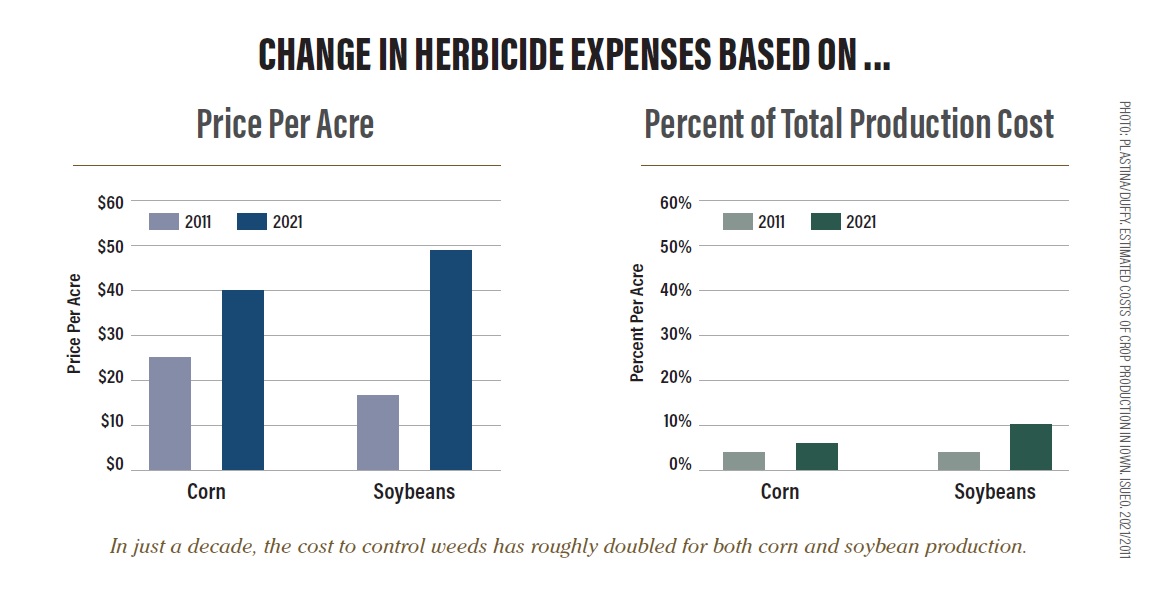The Battle for Clean Fields Tops Billions of Dollars

The cost of fighting weeds is growing. Herbicide expenses have risen by nearly $15 per acre for corn and more than $30 dollars per acre for soybeans over the past decade, according to the latest data of estimated costs of crop production in Iowa.
“The cost of controlling weeds is increasing much more rapidly than other production costs,” says Bob Hartzler, retired Extension weed specialist for Iowa State. “If you look at soybeans in the last 10 years, the herbicide costs have basically doubled but if you look at the percent of total expenses for producing that crop, it's more than doubled.”

In Iowa, herbicide costs as a percent of the total cost per acre of production were 4% in 2011. Ten years later they are 10%. While the jump isn’t as high in corn, Hartzler and other weed scientists say the increase is significant.
“You don't need to be a rocket scientist when you look at the types of herbicide programs farmers are using now versus what they were using 10 years ago to realize the costs are increasing,” Hartzler says. “We're going to continue to see that escalation of herbicides until we get some of these alternative tactics into the system.”
The answer isn’t just to spend less, says Aaron Hager, associate professor of extension for the University of Illinois. It’s true, that may lower your input costs, but it may also cost you much more in the long run.
Do Nothing
Ignoring the problem won’t make it go away, says Anita Dille, professor of weed ecology at Kansas State University. A few years ago, she and several colleagues put a number on it. They found doing no weed control will cost a corn and soybean farm half of their yield. Added up, that meant more than $40 billion in losses annually in the U.S. and Canada alone.
However, yield isn’t the only expense. She says weeds cost farmers money in things like quality loss, contamination, harboring insects or disease or even wear and tear on equipment.
“When we think of a weed’s life cycle, people are looking for that Achilles heel,” Dille says. “What is that pinch point on the life cycle of that weed that I can go after and be successful?”
Changing cropping systems, adding in cover crops, adjusting row spacing or timing are all ways farmers have traditionally combatted weeds.
New Ideas
Even as new technology comes out that can pulverize weed seeds at harvest, electrocute escapes or zap seedlings with lasers, Hager says consistency in managing weeds is still key.
“I really don't see in the foreseeable future that we're going to develop a technology that says, ‘Hey they’re all gone,’” Hager says. “The best weed control technology I could think of would be somehow to stimulate all the seeds in the soil seed bank germinate at once, but we don't have that technology.”
Hartzler is encouraged by what he’s seeing on the horizon.
“Just looking at the advances in the technology in the last three or four years is amazing, and I am confident we're going to continue to grow crops the way that we have for the past 40 or 50 years,” Hartzler says. “It's just going to take a little bit more diversity than what we've been doing and there's nothing wrong with that.”







